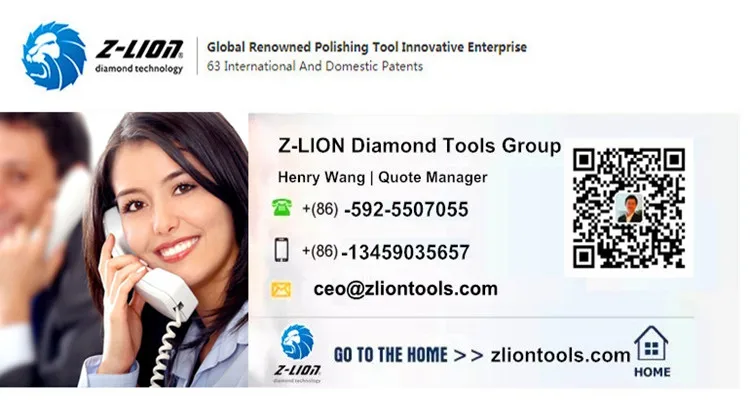Keywords diamond, paper, 2020-04-01 09:25:13





Summary 1, the direct conversion of synthesis of large pure phase polycrystalline diamond author: Wang wide Henan University Wang Hai wide, Zhang phase method, place the star, such as direct conversion of synthesis of large pure phase polycrystalline diamond [J] Diamond and abrasive wear. Tool Engineering, 2018, 38 (1): 1 ...
1. Synthesis of large-size pure phase polycrystalline diamond by direct conversion method
Author: Wang wide
Henan University of Technology
Wang Haikuo, Zhang Xiangfa, Wei Xing, et al. Synthesis of large-size pure-phase polycrystalline diamond by direct conversion method [J]. Diamond and Abrasive Engineering, 2018, 38 (1): 1-6.
Under different thermodynamic conditions, different carbon sources are used as the starting materials, and direct-phase conversion methods are used to synthesize pure-phase polycrystalline diamond blocks (φ6 mm × 6 mm) with different grain sizes and colors, and use X-ray diffraction and Raman spectroscopy. And scanning electron microscope. The hardness of the yellow transparent sample with a nanostructure measured by Vickers indentation method was 130 to 270 GPa (loaded at 3 N). The wheel-to-grind experiment on the yellow transparent sample has an abrasion ratio of 1.658 × 106, which is about 25 times of the mainstream cobalt-based petroleum diamond composite sheet on the market today. Differential thermal analysis shows that the thermal stability of the yellow transparent sample is basically the same as that of carat-grade single crystal diamond. Nano-structured polycrystalline diamond and diamond large single crystal are rubbed against each other. The abrasion ratio is 2.5, which is more than that of diamond large single crystal. Excellent abrasion resistance.
2. New advances in research on diamond self-supporting films prepared by DC arc plasma spraying
First author: Li Chengming
University of Science and Technology Beijing
Li Chengming, Chen Liangxian, Liu Jinlong, et al. New advances in research on diamond self-supporting films prepared by DC arc plasma spraying method [J]. Diamond and Abrasives Engineering, 2018, 38 (1): 16-27.
Abstract This article summarizes the new research progress in the preparation of self-supporting diamond films by DC arc plasma spraying, and introduces the arc characteristics, diamond crystal quality, mechanical properties, optical properties and thermal properties. The research shows that the crystal quality and stress state of the diamond film are different in different arc regions. The titanium transition layer can reduce the residual stress of the diamond. The fracture toughness of the diamond measured by four-point bending is 10.99 MPa · m1 / 2; within a certain temperature range The relationship between diamond absorption coefficient and temperature is basically not affected by diamond quality and thickness; the better the diamond's optical properties, the higher its thermal conductivity, and the thermal conductivity of the diamond-shaped nucleus surface is slightly higher than that of the growth surface. Above 500 K The thermal conductivity of the polycrystalline diamond film is close to the single crystal level.
3. Preparation and characterization of titanium dioxide-coated fine diamond
First author: Zhao Yucheng
Yanshan University
Zhao Yucheng, Li Yapeng, Yan Ning, et al. Preparation and Characterization of Titanium Dioxide-Coated Fine Diamonds [J]. Diamond and Abrasives Engineering, 2018, 38 (6): 7-12.
A core-shell structured titanium dioxide-coated fine diamond (UFD @ TiO2) was prepared by using Styrber method using polyvinylpyrrolidone (PVP) as a coupling agent, tetrabutyl titanate (TBOT) as a TiO2 precursor, and ammonia as a catalyst. ), To study the effect of the pH value of the solution, the amount of ammonia and deionized water on UFD @ TiO2. XRD, SEM, DSC-TG and other methods were used to characterize UFD @ TiO2. The three-point bending method was used to determine the flexural strength of ceramic binder samples with UFD or UFD @ TiO2 added. The fracture of ceramic binder samples was observed by SEM. Micromorphology. The experimental results show that when the pH of the solution is about 8, the volume fraction of ammonia water is 0.8%, and the volume fraction of deionized water is 0.8%, the TiO2 produced by TBOT hydrolysis is easy to heterogeneously nucleate on the diamond surface, and a dense and uniform TiO2 film can be obtained Layer; the initial oxidation temperature of UFD @ TiO2 is 650 ℃, which is 67 ℃ higher than the initial oxidation temperature of UFD 583 ℃; the flexural strength of the UFD @ TiO2-ceramic bond sample is higher than that of the UFD-ceramic bond sample. The flexural strength was increased by 20.9%.
4. Preparation and properties of PCBN matrix impregnated diamond composites
First author: Liu Baochang
Jilin University
Liu Baochang, Cao Xin, Meng Qingnan, et al. Preparation and properties of PCBN matrix impregnated diamond composites [J]. Diamond and Abrasive Engineering, 2018, 38 (5): 21-27.
Abstract A diamond composite was prepared by mixing cubic boron nitride powder, various binders, and titanium-plated diamond particles under the conditions of 5 ~ 6 GPa, 1400 ~ 1500 ℃ and holding for 5 minutes. Scanning electron microscopy (SEM), X-ray diffractometer (XRD), energy spectrum analyzer (EDS), Raman analyzer (Raman spectroscopy), and abrasion resistance and microhardness testing equipment, etc. , Phase composition, interface binding, and mechanical properties. The experimental results show that the diamond particles are well distributed in the cubic boron nitride matrix, and the interface between the two is firmly bonded; the ceramic hard phases such as TiB2, TiC, AlN generated at the interface can improve the wear ratio, microhardness, Physical and mechanical properties such as impact toughness. The abrasion ratio of the new material is 37.64 times higher than that of traditional materials, the Vickers hardness is greater than 40 GPa (loading force 10 N), the density is more than 97%, and the heat resistance is 1148 ℃. Compared with the traditional PDC composite sheet, Heat resistance improved by 28% to 64%.
5. Principle and application of orderly arrangement of abrasive particles in superhard abrasive tools
Author: Feng initiative
Henan University of Technology
Feng Chuangju, Cui Zhongming, He Qingshan, et al. Principles and applications of orderly arrangement of abrasive particles in superhard abrasives [J]. Diamond and Abrasive Engineering, 2018, 38 (1): 65-72 + 77.
Abstract The super-hard abrasive tools with orderly arrangement of abrasives are a new type of grinding tool family. Their working surfaces have grinding edges arranged in a regular order. Compared with traditional grinding tools, they have a large chip space and grinding edges. The advantages of sharpness, low grinding force and low grinding temperature have been successfully applied in the field of high-precision grinding, and it has shown good application potential. However, how to achieve high efficiency and precise and orderly arrangement of abrasive particles is still a difficult problem, so it is urgent to develop new abrasive particle arrangement technology. The article introduces the basic theory of the orderly arrangement of abrasives, the structure of abrasive tools, the main manufacturing methods, and the research and development situation, analyzes the influence of the arrangement method on the grinding performance, and looks forward to its future development direction.
6. Experimental research on dynamic pressure plane polishing of magnetorheological microstructures
Author: Dong Min
Guangdong University of Technology
Dong Min, Lu Jiabin, Pan Jisheng, et al. Experimental research on dynamic pressure planar polishing of magnetorheological microstructures [J]. Diamond and Abrasives Engineering, 2018, 38 (1): 82-88.
Abstract In order to improve the polishing efficiency of cluster magnetorheological planes, microstructures were added to the surface of the polishing disc to enhance the hydrodynamic pressure during processing. Planar polishing discs and polishing discs with different microstructures such as holes, V-grooves, U-grooves, and rectangular grooves were used for polishing tests and polishing pressure characteristics tests. The effects of machining gaps and workpiece speed on machining effects were studied. The results show that the microstructure on the surface of the polishing disc has a greater impact on the material removal rate of the workpiece. The material removal rate of different microstructure discs is in the order of V-shaped disc> U-shaped disc> flat disc> hole disc> rectangular disc, of which the V-shape The material removal rate of the disc is more than 25% higher than that of the flat disc; all polished discs can obtain nanoscale (Ra within 8 nm) surfaces. When the machining gap is 0.9 ~ 1.0 mm and the workpiece speed is 550 r / min, the machining effect is better.
7. Wear analysis of arc-shaped grinding wheel during aspheric grinding
Author: Chen Bing
Hunan University of Science and Technology
Chen Bing, Luo Liang, Jiao Haowen, et al. Wear analysis of arc-shaped grinding wheels during aspheric grinding [J]. Diamond and Abrasives Engineering, 2018, 38 (5): 56-60.
Aiming at the problem that grinding wheel wear can seriously affect the quality of aspheric grinding, based on the aspheric grinding movement method, the formulas of material removal volume and grinding wheel wear volume during aspherical grinding are analyzed, and the grinding wheel wear experiment is used to explore the Wear Law of Arc-shaped Diamond Wheel for Spherical Grinding. The results show that: during the grinding of aspherical surface, the arc-shaped diamond grinding wheel will reduce its radial size. Before the failure of the grinding wheel, there are mainly three stages in its diameter change: rapid diameter change stage, slow change stage and small amount. Change stage. The structural characteristics of the surface of the arc-shaped grinding wheel make the binding force of the binding agent on the top end of the grinding wheel of the grinding wheel lower than that of other abrasive particles, which causes the abrasive particles and the binding agent in this area to be quickly worn until the arc shape The geometric structure of the diamond grinding wheel no longer affects the holding power of the binding agent on the abrasive particles, and its wear process is similar to that of the flat diamond grinding wheel.
8. Experimental research on adaptive abrasive belt grinding for fan blades of aviation titanium alloy
Author: Zhang's
China Aviation Development Shenyang Liming Aero Engine Co., Ltd.
Zhang Hongzhi, Liang Qiaoyun, Chen Shengtian, et al. Experimental research on adaptive abrasive belt grinding of titanium alloy fan blades for aviation [J]. Diamond and Abrasives Engineering, 2018, 38 (5): 67-72.
Abstract The materials of aero engine blades are mostly titanium alloys. Such materials have good strength and mechanical properties but poor machining performance. The precision and surface quality of the blades after die forging and finishing milling need to be processed to meet the requirements of aero engines. The die-forged blades were detected by the best fit method of a three-dimensional measuring instrument, the machining allowance of the blade profile was determined, and the material of the aviation die-forged blades was quantitatively removed by the adaptive abrasive belt grinding method. The results show that the grinding process can accurately remove the machining allowance on the surface of the forged blade, ensure the arc transition of the inlet and exhaust sides of the blade, and the surface roughness Ra of the blade is below 0.4 μm.
9. Simulation and experimental research of diamond oil stone super-finished zirconia ceramic bearing channel
First author: Li Songhua
Shenyang Jianzhu University
Li Songhua, Wang Weidong, Wu Yuhou, et al. Simulation and experimental research of diamond whetstone ultra-finished zirconia ceramic bearing channel [J]. Diamond and Abrasives Engineering, 2018, 38 (4): 64-71.
Abstract The ABAQUS software is used to establish a finite element model of diamond whetstone super-finished zirconia ceramic bearing channels. The machining mechanism is analyzed. The diamond whetstone is used to super-finish zirconia bearing channels to obtain the channel surface after super-finishing. Roughness and surface morphology. The effect of super-finishing stress on the surface quality of zirconia bearing channels was studied. The results show that the tangent speed of the workpiece increases from 150 m / min to 450 m / min, the surface stress decreases, the surface roughness value decreases from 0.091 2 μm to 0.059 3 μm, and then increases; the pressure of the oil stone increases from 0.2 MPa to 0.8 MPa The surface stress increases, and the surface roughness value decreases from 0.194 2 μm to 0.032 2 μm. When the diamond oil stone's long and short stroke swing speeds increase, the bearing channel surface stress increases, and its surface roughness values are changed from 0.071 6 μm increased to 0.085 8 μm and 0.062 7 μm increased to 0.100 8 μm. Properly increasing the tangent speed of the workpiece, the pressure of the oil stone, the swing speed of the long stroke, and reducing the oscillation speed of the short stroke will help improve the machining quality.
10. Research on composite grain finishing method of abrasive grain high-speed flow electrolytic machinery
First author: Wang Jinshan
Nanjing University of Aeronautics and Astronautics
Wang Jinshan, Xu Zhengyang, Xu Guangchao. Study on Composite Finishing Method for High-speed Flow Electrolytic Mechanical Abrasive Particles [J]. Diamond and Abrasive Engineering, 2018, 38 (5): 50-55.
Aiming at the finishing of metal parts with complex profiles, a high-speed abrasive grain composite electro-mechanical finishing method is proposed: micro-abrasive grains flowing with the electrolyte at high speed are used. Rub to improve the surface quality of the workpiece. The effects of three methods including composite machining, pure electrolytic machining, and pure abrasive grain high-speed machining on machining effects were analyzed through comparative experiments. Single-factor methods were used to process stainless steel workpieces, and the effects of different test factors on the surface roughness of the workpieces were analyzed. The results show that the composite finishing method can effectively improve the finishing efficiency, reduce the surface roughness of the workpiece, and obtain a good processing effect. When the processing voltage is 5 V, the processing gap is 2 mm, and the particle size is 75 to 106. When the Al2O3 abrasive particles of 5 μm are processed for 5 minutes, the surface roughness of the workpiece can reach 0.17 μm.

-All diamond tools can be ordered and fabricated!
- Henry Wang | Quote Manager
Henry Wang | Quote Manager
-WhatsApp:+86-13459035657
-Email: ceo@zdiamondtools.com
-Web www.zdiamondtools.com
Company Profile
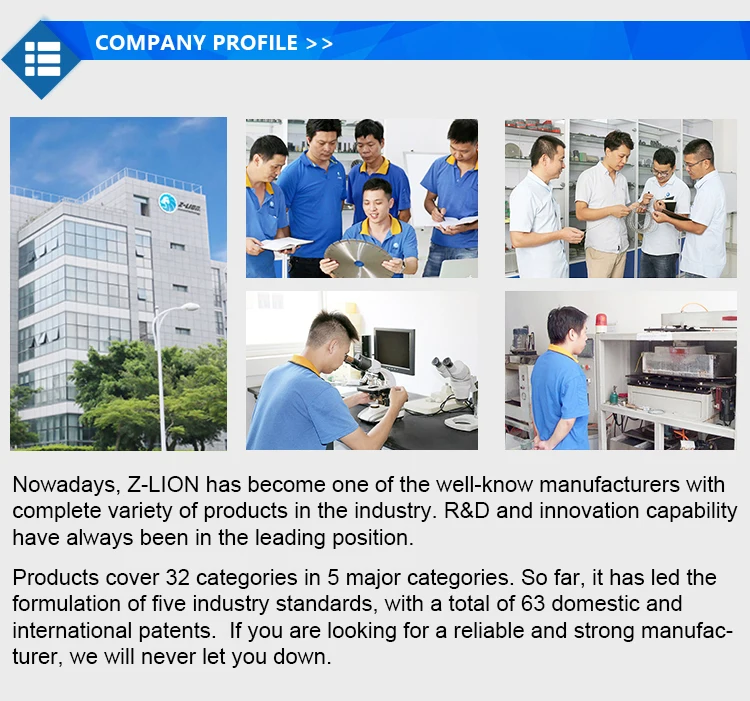
Certifications
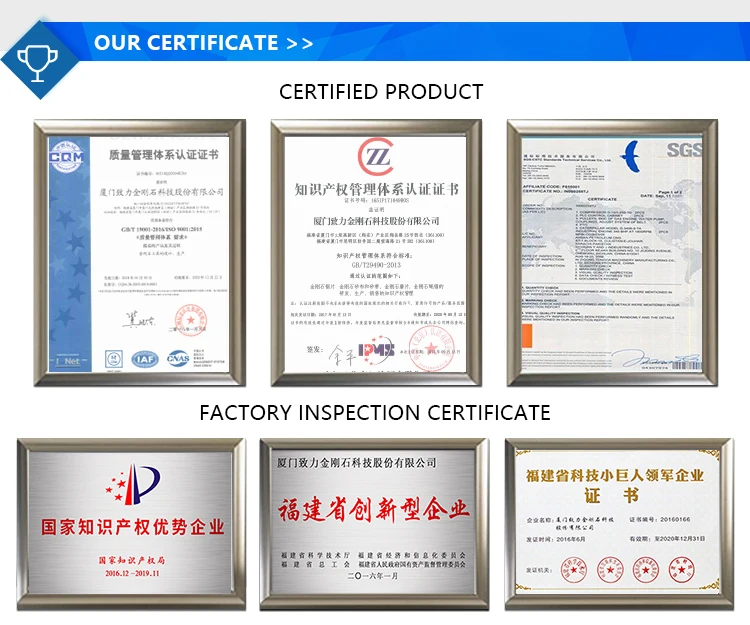
Company Team
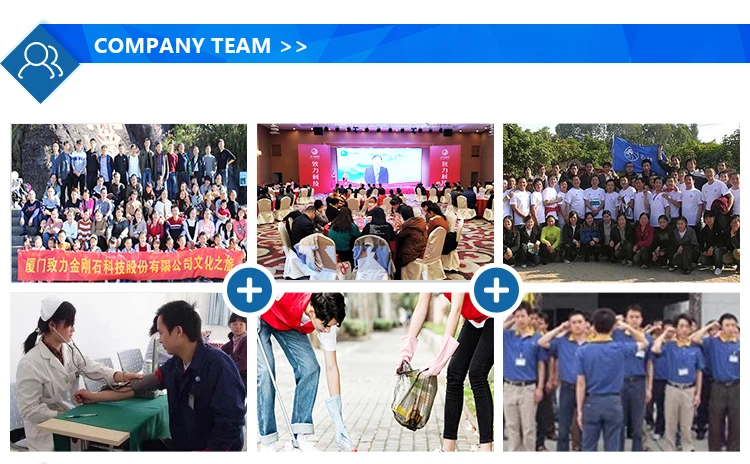
Exhibition
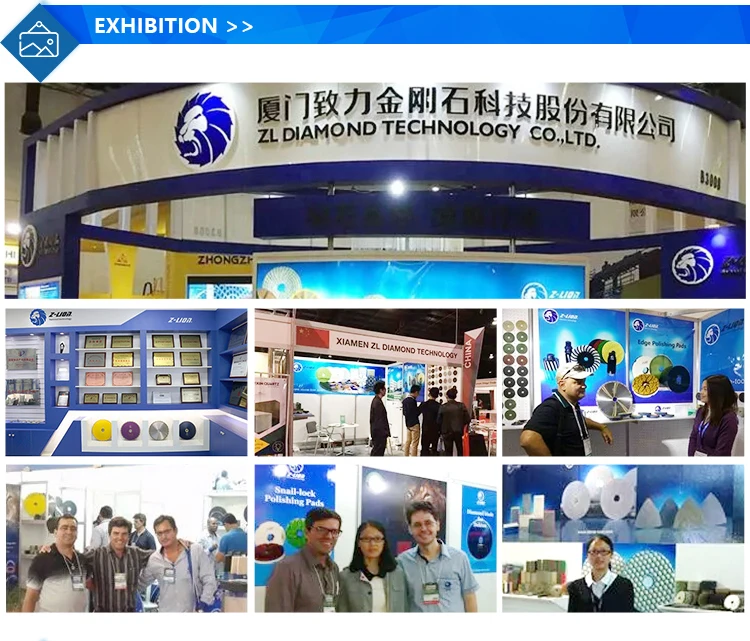
Logistics

FAQ

